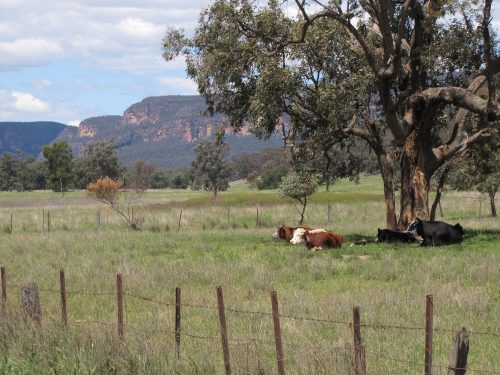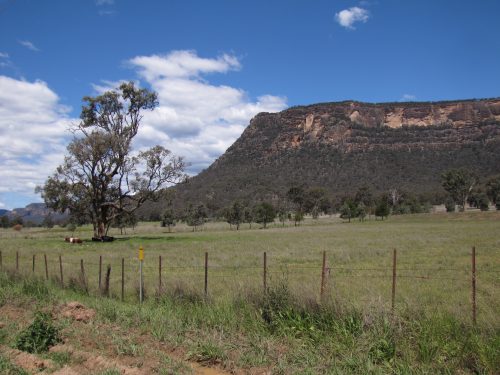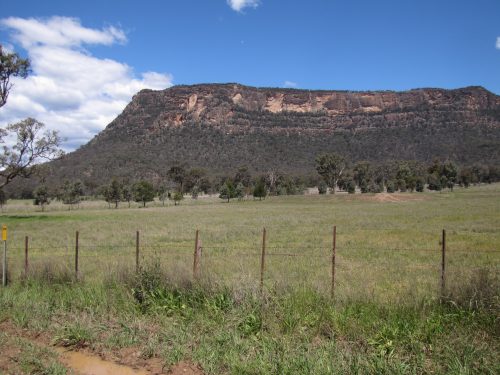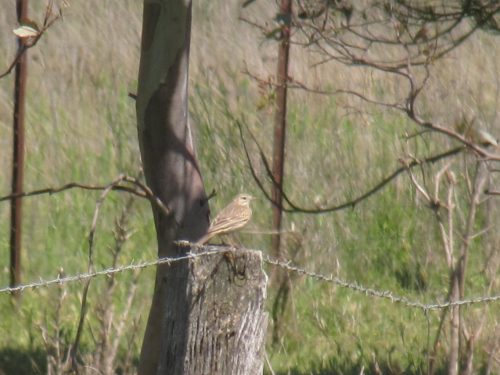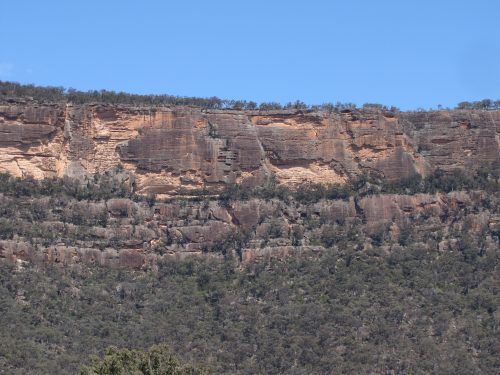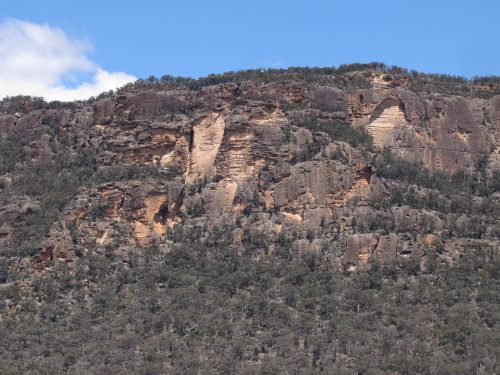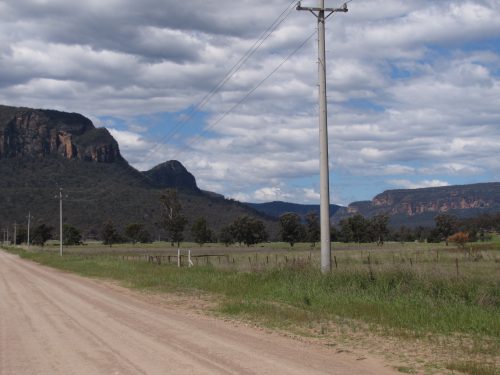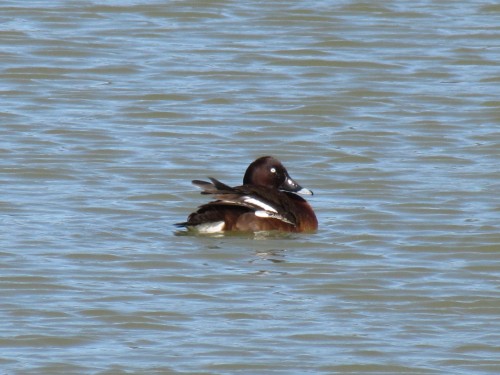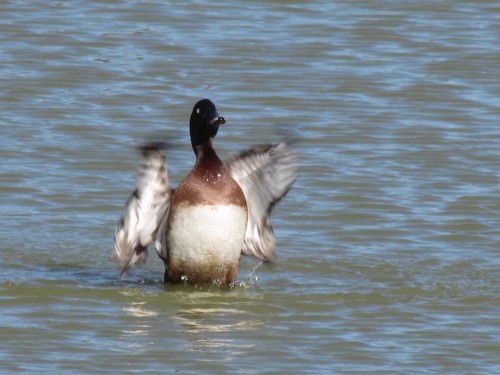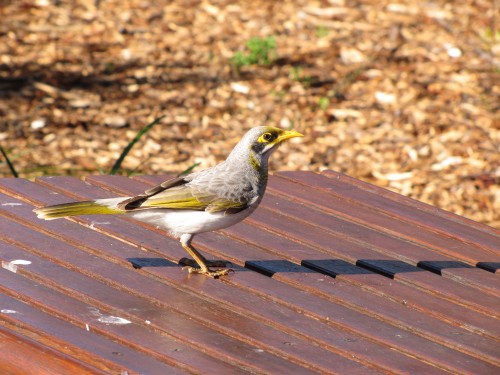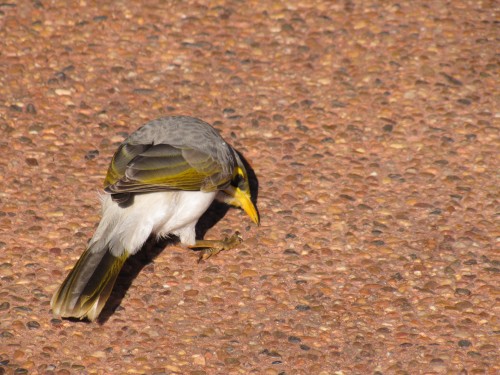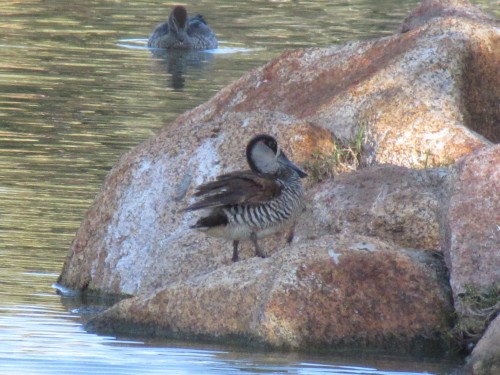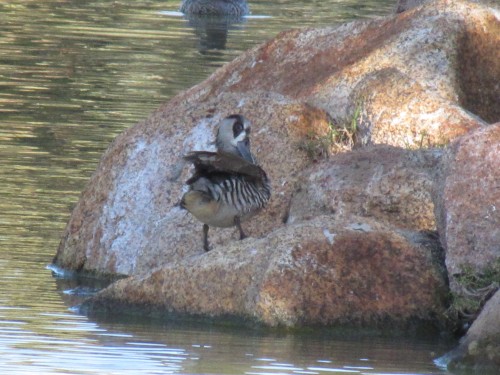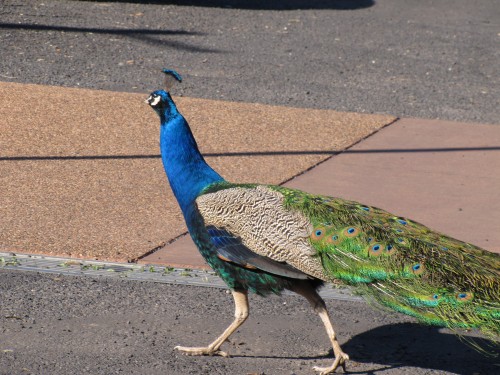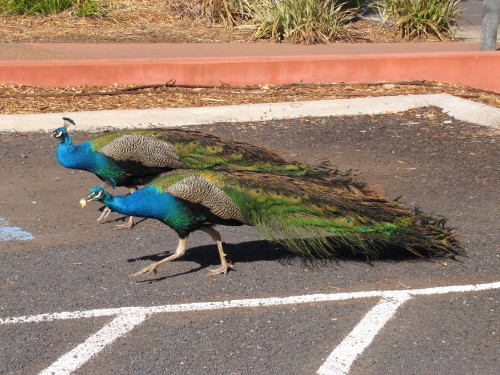My first birding visit to Capertee Valley
After our trip to stay with family in Sydney last year, I decided to take a different route back home to Murray Bridge. On our previous trip we had travelled from Sydney via Katoomba to Dubbo on the first day on the return trip. North of the town of Lithgow we drove through the village of Capertee. I remember stopping there to change drivers. On that occasion, we continued on to Dubbo where we stayed the night. We planned to visit the Western Plains Zoo near Dubbo the following day.
On this trip, however, I planned our homeward trip differently. We planned to stop for the night in Mudgee. This was so we could drive through the popular birding area known as Capertee Valley. I had read a great deal about this valley from other birders, so I was looking forward to a good afternoon of great birding. I ended up being somewhat frustrated and a little disappointed. Because of the distances we travelled that day, I underestimated how much birding time I would actually have. Most of the day was taken up travelling. I should have scheduled several days in this area – at least a whole day, anyway.
Our first stop was just a few kilometres east of Capertee. It was lunchtime, so we stopped at a clearing in the forest on the side of the road.
It was quiet.
Far too quiet. As we sat there eating our picnic lunch, I heard just one bird calling, possibly a treecreeper but I couldn’t be sure which species. I didn’t see a single bird for that whole half hour. Admittedly, around midday is quite often the quietest period for birding here in Australia, especially on hot days. On this occasion, it was pleasantly warm.
As we were having our cup of tea – we always carry a thermos or two of hot water on these trips – a lady pulled up behind our car asking for directions. She, too, was a birder and this was her first venture into this area. Although we knew little of the area, and certainly not how to get to the place she was attempting to visit, we helped her as best we could.
Driving further on along the road travelling east, we eventually came to open country with occasional farmhouses nearby. The vista opened up to spectacular views ahead of us, and to the south. I stopped at one point and took the scenery shots shown above and below. In this area, I saw occasional ravens (probably Australian Ravens), a few Australian Magpies (back-backed sub-species here) and a few Magpie Larks and very little else. At one point I stopped the car, grabbed my camera and zoomed in on a bird quite some distance away. It was sitting on a fence post. I have included the very poor photo below. I think it was an Australasian Pipit.
We continued on until we came to an intersection where we turned left and drove north along towards the small community of Glen Alice. The countryside along this road is wonderfully spectacular, with towering sandstone cliffs bordering the valley. This road has a generally good quality dirt or gravel surface, though there was some evidence that recent heavy rain in the district can cause motorists a few problems.
Also along this road, and the road from Glen Alice to Rylestone, there are waypoints labelled “Bird Watching Site” with numbers ranging up to at least 19. While there is a pamphlet guide available for birders giving the location of these sites, I didn’t track one down. I think that they are available in Capertee. They certainly would be handy. Near the public toilets in the roadside park in Capertee there is a detailed map of the area showing all of the birding sites, along with lists of what can be seen at each point. Update: the pamphlet can be downloaded here as a PDF.
While my first visit to the Capertee Valley was somewhat disappointing, I did have some good sightings while we had afternoon tea at Glen Alice, but I will write about that in a few day’s time. This brief four-hour visit has given me the incentive to revisit this area in the near future, but for a much longer time.
Related reading:
- Birds and animals of the Western Plains Zoo, Dubbo
- Capertee Birder – an amazing collection of articles about the valley as well as sound recordings of some of the birds of the valley.
- Capertee Valley Birdlist and map of birding sites as a PDF file.
- Carol Probets site BM Birding – an excellent resource
Hardhead ducks at Dubbo
Over recent days I have written about and showed photos of the various birds seen on a visit to the Western Plains Zoo near Dubbo, NSW. All of these birds were actually naturally occurring species; none of them were a part of the actual species on display. The wild birds knew how to benefit from the facilities – like the artificial lake near the visitor centre shown above. They also are quick to feed on any unused food put out for the animals.
Today’s post features to Hardhead – also known as the White-eyed Duck. It is found throughout much of Australia in suitable habitat, such as lakes, swamps, large bodies of water, ornamental lakes and even brackish coastal swamps. It is rare in the drier parts of the interior. Although I have only see this species in small numbers, the field guides suggest that it is occasionally seen in large groups numbering in the thousands. It is often dispersive, moving to areas after good rain.
Further reading:
- White-eyed Duck or Hardhead – together with some comments on the possible origins of the name.
Cheeky Miner birds at Dubbo
One of the things I noticed on our visit to the Western Plains Zoo in Dubbo was the number of honeyeaters. The zoo enclosures and the road visitors take on their tour feature many local plants, especially eucalypts. A good number of these are flowering at any one time and this attracts the nectivorous birds such as honeyeaters.
One of the honeyeater species which came up close and personal was the Yellow-throated Miner. One of them is featured in today’s photos. We treated ourselves to an ice-cream from the visitor centre and sat in the picnic area nearby to enjoy our treat. This miner came up really close, checking out if we had any morsels to share with it. The close proximity of the bird made photography easy.
Yellow-throated Miners are found over much of Australia except for the wetter eastern and southern coastal regions and Tasmania. A similar species is the Noisy Miner.
Further reading:
- Time for a sweet break – another photo of a Miner at the zoo
- Noisy Miner Murray Bridge
- Great birding moments
- Miners v Mynas
Pink-eared Duck in Dubbo
One of the lovely features of the Western Plains Zoo in Dubbo, New South Wales, is the large artificial lake next to the visitor centre. I think it is wonderful that visitors can come to this part of the zoo without paying the entrance fee. This is particularly valuable to casual passers-by who do not have the time to spend a whole day in the zoo. (Two days are recommended to see everything and entrance fees are valid for two days.)
It is also great for local people who just want to have a picnic on the grassed area next to this lake. From the picnic area visitors get a good view of two exhibits: one with monkeys and another with lemurs. I will post photos of the lemurs in a few days.
The artificial lake featured in today’s post had a good range of water birds present. I am assuming that all of these birds are actually wild birds, and not a part of the zoo’s collection; a bonus add-on, if you like.
Featured in today’s photos is a Pink-eared duck, also known as a Zebra Duck because of the striped effect of the feathers. This species is a fairly common one in most of eastern Australia and much of Western Australia. It is rare in Tasmania and mostly absent from the drier interior. It is a highly nomadic species.
Peacocks at Dubbo
Over recent posts here I have featured some of the birds I saw on a visit to the Western Plains Zoo near Dubbo, New South Wales. As we were leaving several peacocks strutted past us in the car park – all for the world like they owned the place. I have found that this is a common trait in this species of bird.
I should give this bird it proper name: Indian Peafowl. Most people I know will call it a ‘peacock’, but that is more correctly the name given only to the male. The female is called a peahen. The birds shown in today’s post are all males.
This most colourful and charismatic of birds is an introduced species in Australia. The species is native to India and Sri Lanka. Small feral populations exist in many parts of the world, Australia being no exception. They are a common adornment in zoos, parks and gardens in many parts of Australia.
Further reading:
